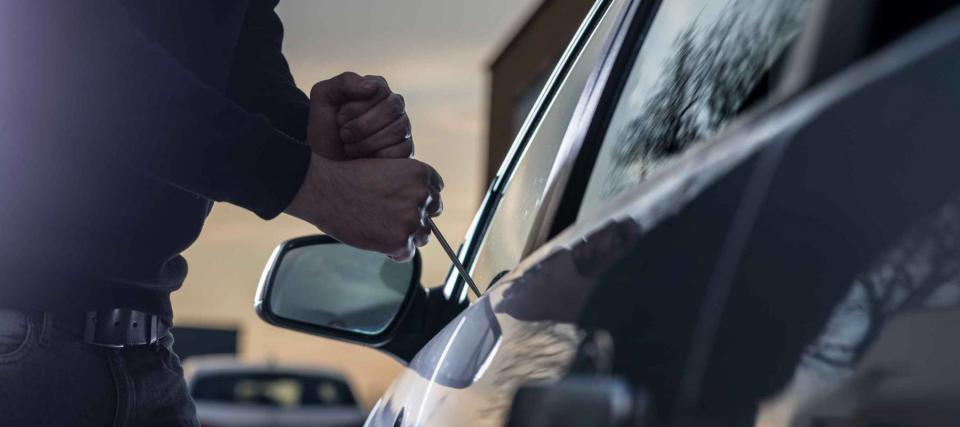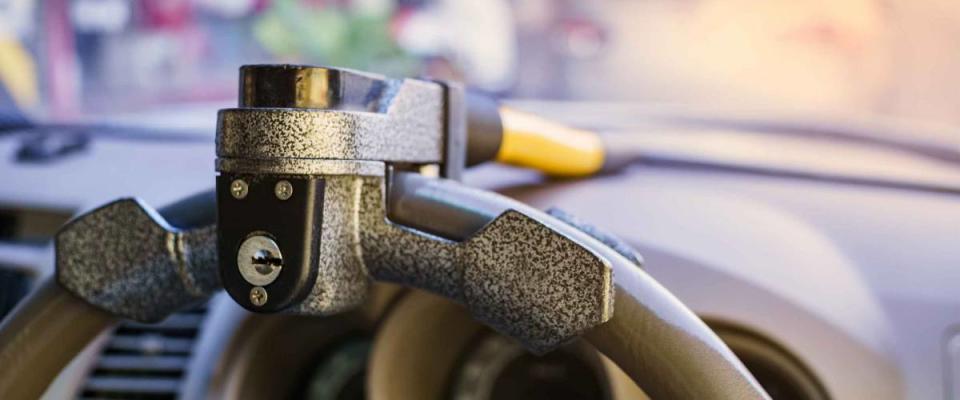Spike in car thefts during pandemic may cost everyone in insurance

One vehicle was stolen every 36 seconds last year, as millions of jobs evaporated and commuter cars were left tantalizingly unattended.
The National Crime Insurance Bureau (NCIB), a nonprofit industry group that fights vehicle theft and insurance fraud, recorded a dramatic increase in thefts between 2020 and 2019.
Early numbers from 2021 show that the trend has continued.
And even if your own car is safe and sound, that doesn’t mean you’ll be unaffected. The recent rash of thefts could result in everyone paying more for auto insurance coverage.
Pandemic likely led to increased thefts

A total of 880,595 vehicles were reported stolen across the country last year, up from 794,019 the year before.
“We have not seen this number of [auto theft] increases in decades,” says David Glawe, president and CEO of the NCIB.
Glawe explains the surge in crime is likely tied to law enforcement focusing on other priorities last year as well as the social and environmental impacts of the pandemic.
“There were no jobs, people weren’t working, school wasn’t open, socializing wasn’t an option. [It was] a perfect storm,” says Glawe. “It was really no shock at all for us in national security and law enforcement positions to see an increase in crime rates.”
On top of that, many drivers abandoned their cars for days at a time while they were stuck at home, making them easy targets for thieves.
Although economic conditions have improved substantially in recent months, Glawe says Americans — especially drivers in hard-hit areas like Washington, D.C., and Denver — shouldn’t expect the crime surge to abate anytime soon.
How drivers can protect their cars

Glawe suggests drivers will need to see dedicated crime-prevention initiatives take place before thefts trend downward.
While law-enforcement decisions are out of your hands, there are some simple steps you can take to keep yourself from becoming a victim.
The NICB recommends drivers:
Use common sense. Park your vehicle in a well-lit area. Keep it locked and always remove your key fob when getting out of the car.
Switch on warning devices. Don’t forget to set your alarm or any other audible or visible warning system.
Enable immobilizing devices. Have a fuse switch or kill switch? Enable them when you leave your car.
Install tracking devices. In the case that your car is ever stolen, this will help law enforcement hunt it down.
As for your auto insurance, Glawe says to make sure you have comprehensive coverage that will protect you in the event of a theft. Simple liability and collision coverage won’t do.
And be sure to keep all of your car’s details handy — make, model, year, color, licence plate — in case you ever have to report it missing in a hurry.
Theft spike may lead to insurance hike

Even after a few years of declining numbers, last year’s spike may impact auto insurance rates, says Danielle Marchell, a spokeswoman for The Zebra, an insurance comparison site.
“But you may not see the increase right away,” she adds.
“It takes some time for an insurance company to ... determine how much is needed to charge insureds. This is also the case for other events that are typically out of the driver’s control, like changes in legislation and severe weather storms.”
Marchell says it’s hard to know how many years of increases would lead to drivers seeing significant increases in their rates because each insurance company has its own formula used to calculate premiums. And they don’t share those formulas publicly.
“It really depends on where you live and what insurance company you have,” says Marchell, but “if you’re in an area that’s seeing a sharp increase in car thefts or accidents, be prepared to pay more.”
Protect your wallet from rising rates

The single best way to keep your insurance premiums low is to drive safely and avoid collisions and traffic violations, says Marchell.
And while you may not have much control over non-driving factors that can impact your rates — like your gender, marital status or education level — your credit is something you can change.
Most states allow insurers to set rates using the same information that makes up your credit score — things like your payment history and debt level. Look up your score for free online, then see whether you can reduce your debt or take other steps to boost your score.
When it comes time to shop for a new ride, remember that different cars cost more to insure. Used cars can be an affordable option, and you might save even more by cutting the dealership out of the transaction.
Finally, as Marchell notes, every insurer has its own formula when calculating premiums — and that means prices can vary widely. She recommends looking around and comparing auto insurance offers every six to 12 months to ensure you’re getting the best deal.
“You could be saving money with the same level of coverage elsewhere,” says Marchell.
This article provides information only and should not be construed as advice. It is provided without warranty of any kind.
